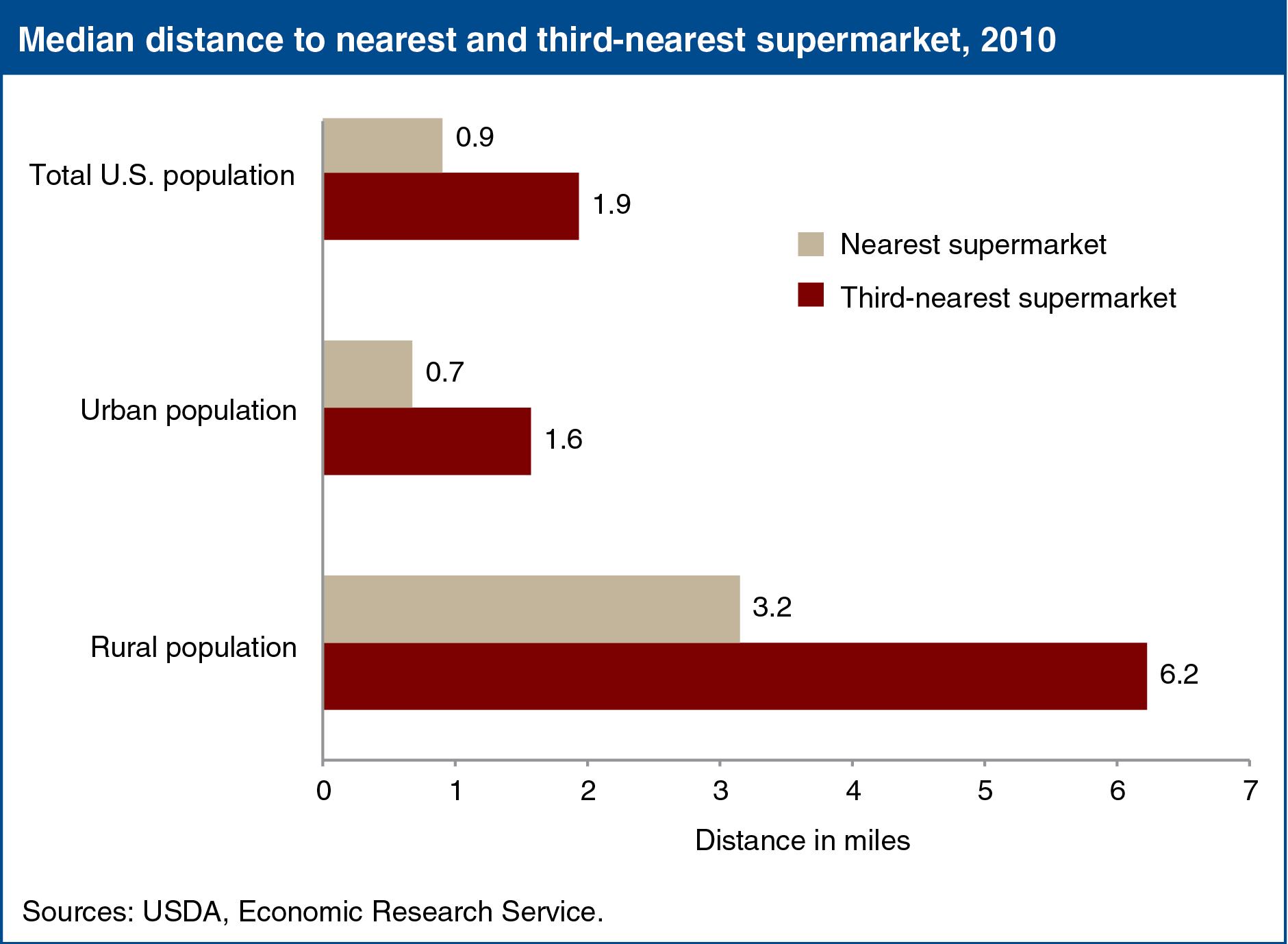Distance to supermarkets is one measure of food access
- by Economic Research Service
- 4/3/2013

Distance to the nearest supermarket or large grocery store is often used as a measure of access to the foods necessary for a varied and healthful diet. However, because product quality, selection, and price can vary among supermarkets, measuring distance to multiple stores may provide a better picture of whether shoppers can obtain a wide selection of healthful foods at affordable prices. In 2010, half of the U.S. population lived within 2 miles of three supermarkets, while 80 percent lived within 5 miles. Individuals in rural areas had to travel farther than their urban counterparts to the third-nearest store—the median distance to the third nearest supermarket was 6.2 miles for rural residents compared with 1.6 miles for urban residents. This chart appears in “Different Measures of Food Access Inform Different Solutions” in the March 2013 issue of ERS’s Amber Waves magazine.

